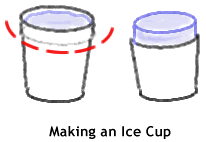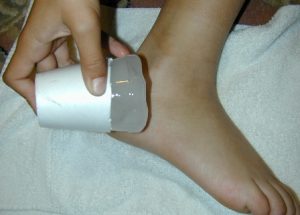What does ice do for an injury?
Ice is primarily an analgesic, a pain relief tool and not an actual treatment. It won’t fix your injury, in fact it may slow down one section of your recovery system response – inflammation. When tissue is damaged, the body responds with a complex reaction both chemically and neurologically called inflammation. It is a significant part of the healing process.
Inflammation can be painful and disabling as it is being, quite rightly, protective of the body. But the reaction can be excessive and disrupt the balance between resting the injury and promoting movement, which is equally important. Cooling the area around the injury also reduces secondary cellular damage.
Simply speaking if we can control the pain effectively and promote early movement then ice is generally seen as a good thing. But we cannot stop the inflammatory response completely and we would not want to.
What injuries should I use ice for?
Ice is an effective management tool for a wide range of tissue injury.
Most commonly ice is used for acute soft tissue injury but it can be used to help manage pain and chronic inflammation also. An acute injury is one that has taken place recently (within 7-10 days) and soft tissues are muscles, ligaments, tendons etc.
Chronic inflammation such as the wide range of arthritis conditions may benefit from ice, especially if the area is currently suffering an acute flare up and is hot/warm to touch. But more often these may benefit from heat treatment (but that’s another blog!).
In conditions where we believe there is less or no inflammatory response such as tendon conditions such as tennis elbow, achilles tendinopathy etc ice may be useful but it is simply helping to relieve pain neurologically.
When should I not use it?
- If the area has an open wound
- If the area where you wish to apply the ice has reduced skin sensation (ice can burn so if you can’t feel adequately, then you risk damaging the tissue further)
- Poor circulation in the area (peripheral vascular disease, Raynaud’s Disease etc) means you can disrupt normal vascular responses.
How do I apply it?
There are various methods which suit different areas of the body:
- Simple ice pack (ice cubes crushed in a bag, frozen peas, gel packs etc). These should be applied with a barrier to protect the skin from burning (anything from a freezer is very cold!), such as a damp towel or a layer of baby oil applied to the skin. These are common barrier methods but there are others.
- Ice massage can be really useful for small area applications. The cold fingers method (simply massage the area with an ice cube) or the polystyrene cup method (place a polystyrene cup filled with water into the freezer). Once frozen remove and tear of a small section around the top of the cup. Massage the ice onto the injured area whilst holding the cup and keeping the fingers warm. Fantastic if the area is small as you get the benefit without the whole area being made uncomfortable.
How long do I ice for and how often?
This depends on the depth of the area you are trying to effect. If the injury is to your thumb and therefore superficial then 2-4 minutes is sufficient. But for deeper structures such as your knee then 10-15 minutes. The maximum effect occurs at about 10-12 minutes so no longer than 15 minutes. The tissue will warm up again within a hour or two and lose its effect. Therefore repeat it 2-3 times per day until the pain is under control.
Disclaimer: The information we provide is written to help you understand. Should you have any health concerns, you should seek advice from a qualified healthcare professional such as a physiotherapist or your GP.




